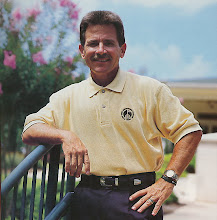Three Things All Golfers Should Know
About Winterkill
Winterkill is an easy problem to
define but difficult to fully understand. Simply put, winterkill occurs when
turf dies during winter. However, understanding the mechanisms that cause
winterkill, creating effective prevention strategies and formulating effective
recovery programs is complex.
What causes winterkill?
Winterkill is a catch-all term
describing winter injury to turfgrass that occurs through a variety of
mechanisms such as ice suffocation, crown hydration, low-temperature injury and
desiccation. Identifying the exact cause of winterkill is difficult because
winterkill may be caused by one mechanism or could result from a
combination of mechanisms that act simultaneously or occur at multiple times
during winter. Additionally, turfgrass species have different tolerances to
winter injury. For example, creeping bentgrass is much less susceptible to
winter injury than Poa annua.
Can winterkill be prevented?
Scientists have not been able to
find a silver bullet that prevents winterkill. However, great strides have been
made breeding turf varieties that have a better tolerance of winterkill
mechanisms. For example, USGA-funded research has resulted in the release of
cold-hardy bermudagrasses such as Latitude 36™, Northbridge™ and Patriot.
Golf course superintendents are not
able to prevent winterkill, but they can implement a variety of programs that
give turfgrass playing surfaces the best chance of surviving winter. Common
strategies in northern climates include converting to cold-tolerant turf
varieties, implementing proper fall fertilization, raising mowing heights
during fall, reducing shade, improving drainage and covering putting greens
during winter.
What are the most effective recovery
programs?
Winterkill damage can range from
minor to severe, and golf course superintendents use a variety of methods to
repair the damage. Weak areas of turf may recover with fertilization and
traffic restrictions, but dead areas must be re-established with seed or sod.
Repairing an area that has been severely damaged by winterkill is an
opportunity to make improvements that may help avoid future damage. Correcting
shade, drainage or traffic issues will improve turf conditions during the golf
season and winter hardiness. Re-establishing a severely damaged area also
provides an opportunity to use cold-tolerant turf varieties that will be less
vulnerable to winterkill in the future.
Winterkill is a seasonal visitor
that no golf course wants to see. It often arrives quickly, but the impact on
playing conditions can last for weeks or months. Golfers can take comfort in
the knowledge that golf course superintendents and scientists are working hard
to understand and overcome the age-old problem of winterkill.



